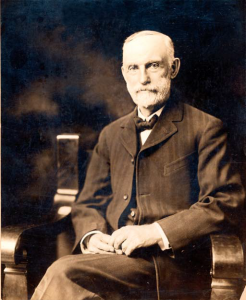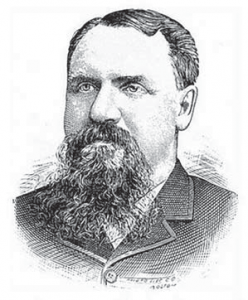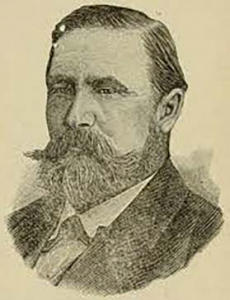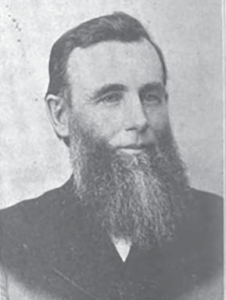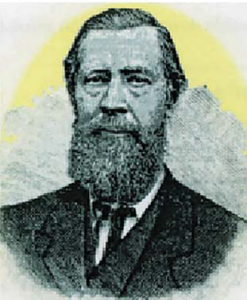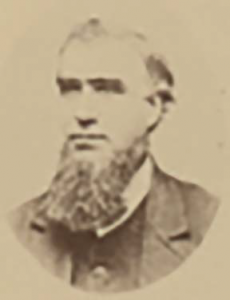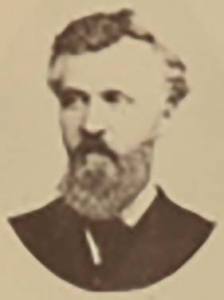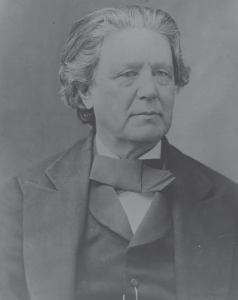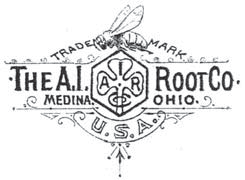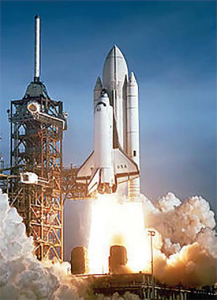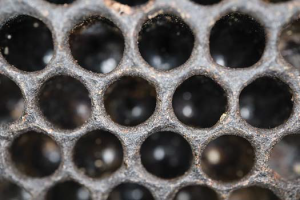Authot: A.I. Root
About the year 1870 a stranger called who wanted to talk about bees. I was just then getting ready to go out bee-hunting in order to be able to write intelligently on that subject. So many had come to see me about bees that I felt a little impatient at being hindered just then; but as this visitor seemed to be quite an intelligent man I told him I should like to have him go with us if he cared to. While we were in the woods looking up among the trees for a bee-tree I began whistling a simple little air from a music book, for I was then taking music lessons. The stranger made the remark that what I was whistling was rather pretty. I told him I thought it was very pretty indeed, even though it was just a simple little exercise for beginner’s music.
“Well, I am glad you like it Mr. Root, for it is something that I composed myself.” I turned about and stared at him and concluded he was not only a brag but that he was untruthful and I replied a little dryly that he must be mistaken, for it was an exercise I had just learned for the Curriculum.
“Can’t help it Mr. Root, I composed it all the same. “
As he saw I did not believe it, he said nothing more about it, but when we got home he asked if he might look at my Curriculum and as he did so he placed his fingers on a foot-note on one of the pages to the effect that Dr. C.C. Miller had assisted in the compilation of the work. I nodded.
“Well,” said he, “that refers to me. I am Dr. C.C. Miller.”
Or course, we asked him to play for us and we were glad to have him consent to stay over night – in fact, to make our home his home so long as he remained.
Just before he was ready to take his leave, he surprised me by a little talk something like this:
“Mr. Root, I think I may confess now that I had a plan and purpose in making you this visit besides learning what I could about bee culture. I wanted to say something to you, but felt that, before I could say it, I must have you get acquainted with me and I wanted to win your confidence that my words might have influence with you. I have now got acquainted and I think I have won the friendship of both yourself and wife. You will excuse me for being somewhat presuming. Mr. Root, I want you to be a Christian. I want you to exert the influence you possess and to use the hold God has given you on the hearts of the people for the cause of the Savior.”
I cannot remember what else he said just then, but I hastened to tell him that I was already in favor of Christianity and good morals. I then expected him to “let up,” in the same way I had induced our pastor and other good friends to pass me by. He had no intention, however, of giving up thus easily. He told me that he who was not for the Savior was against him, kindly and pleasantly insisted that my influence was on the wrong side. I had tried to make him compromise a little, but he held fast to the Bible and the Bible text with such earnestness and faithfulness that I never got over it. He talked with all the energy I had heard traveling men use to sell goods but he had nothing to sell. He pointed me to the open door of salvation, open to all who would accept it “without money and without price.” This talk I never forgot and it influenced me greatly in the years that followed.
In November, 1876, I had the rare pleasure of a visit from G.M. Doolittle. The chief characteristic of this man as an apiculturist seemed to be an intense determination to make his bees self-sustaining and even during the very worst season to make them bring in more money than was paid out on them. Not only did he aim to get all the nice white honey that his bees gathered, but he aimed to get it in the most marketable shape. There were many in those days who reported large yields from single colonies, but the number who could report a steady cash income from their apiaries, good seasons and bad, as did Doolittle – such men were few.
L.L. Langstroth
In April, 1875, Mr. Langstroth was our guest for a week or so and many were our talks on the unsettled questions pertaining to bee culture. He had performed in the past a great multitude of experiments, many of them to decide points which I had supposed had never been considered before. He had a wonderful memory in referring to the exact place in which the subject had been considered in earlier volumes of the American Bee Journal or in earlier editions of his book.
Prof. A.J. Cook
In the Fall of 1875 I took a trip through Michigan, calling on those beekeepers whose addresses I could remember. It was not a planned trip but a random route so far as the beekeepers were concerned.
I was more pleased then I could tell with my visit to the College Farm at Lansing and I shall always feel under obligations to my friend A.J. Cook, Professor of Entomology, for the many courtesies he showed me. Although the bees in the college apiary had died out entirely the Winter before, on account of being in a bee-house that was not proof against a temperature of 31° below zero, a new start was made in the Spring by the purchase of two colonies. These had been increased to eight good colonies, besides furnishing honey that was sold to the amount of $80, with still more to be taken.
In the afternoon in company with Prof. Cook I had a most interesting visit with my old friend, John L. Davis, of Delhi Michigan. That season Mr. Davis had increased his 39 colonies to 130 and had about 2500 pounds of comb honey and 1000 pounds of extracted. He said he could have secured nearly twice as much if he had given the bees’ proper attention. Mr. Davis had kept bees successfully for 40 years and his winter losses were always quite negligible.
Met Many Old Friends at Conventions
On the 14th of September, 1883, I returned from a trip to the Tri-State Fair and the Toledo convention. Although I stayed but a few hours I had the pleasure of meeting a good many old friends – Thomas G. Newman, Charles F. Muth, E.E. Hasty, J.B. Mason and a host of others. The display of honey was most excellent, as was also the collection of implements for the apiary.
I attended the North American convention held in Toronto in 1883. D.A. Jones was there and he was D.A. Jones still, just as he always was, a natural born leader, a man kind and liberal to a fault. It was he who secured the beautiful building on the fair grounds and who taught the Canadian people that they could raise honey. It was through his influence, moreover, that the convention was brought to Canada. If he ever asked for anything he did not get without any trouble, it was something that I never heard of.
Prof. Cook and his “twin brother,” Dr. C.C. Miller was there.
L.L. Langstroth came a little while after I arrived. C.F. Muth told us about buying and selling honey. Rev. W.F. Clarke had wandered from away up north down among his bee friends again. Vandervort and Pelham were there with their samples of comb foundation and also their mills. O.O. Poppleton, then of Iowa, Judge Andrews of Texas, Mr. House of New York State, Mr. Hart of Florida and many more whom I can not remember were there.
Mr. Langstroth and I roomed together at the convention in Toronto and we not only talked until after 12 at night but he wakened me before six in the morning to tell me of some more grand ideas he had just thought of. You may know that I did not object to being wakened so early, for if there was a pleasant bee enthusiast on the face of the earth, it was good friend Langstroth.
I attended the national convention at Detroit in the Fall of 1885 and found there D.A. Jones, Thomas G. Newman, W.F. Clarke, W.Z. Hutchinson, James Heddon, good old father Langstroth again and L.C. Root of New York State, whom I had never seen before. Mr. Root occupied the president’s chair. Round about were the friends of whom I had heard through the journals, for years.
During one of the sessions Mr. Clarke stood up with a paper box in his hand and said something as follows:
“Will A.I. Root please stand up here before me and look me in the face?”
People think of a great many things while they are falling from a building or while they are in some great danger. Well, while I was rising to my feet I thought of a great many things. I inventoried, as it were all that I had been guilty of to see whether there was anything that I might fear to have brought to light. Although I thought I was bad enough, I could not think of anything that should warrant my being called up in that way for public reprimand, so I concluded that friend Clarke’s medicine certainly would not be anything bad to take. In substance, he said something like this:
“Brother A.I. Root, we the beekeepers of North America in recognition of your services during the years that have gone by, not only in laboring for our temporal good but in view of the energy and zeal with which you have toiled for our spiritual good as well do hereby tender you this book. We do not all of us endorse all your peculiar doctrines, neither do we think exactly as you do on many points but for all that we know you have worked honestly, faithfully and unselfishly and in view of this we take pleasure in handing you this small testimonial of our esteem and friendship.”
They said I would have to make a speech. A few weeks before this, I had been called upon at large Sunday school convention at Akron, Ohio, to tell my story about the Mammoth Cave. The next day the papers in reporting a part of my talk said that Mr. Root told the truth when he explained at the outset that he was not much of a speaker. Well, I am afraid the friends at the national convention thought I was not much of a speaker; but I think they gave me credit for being honest as the newspaper reporter did.
I wish I could tell what was said and done during the convention that day. No pen could picture the pleasant, hearty good healing that pervaded the meeting. We went there with out hobbies, a great many of us and got laughed at, but we were laughed at so good naturedly that the grace was given us to laugh back again. W.F. Clarke had his hibernating box; James Heddon his pollen theory; C.A. Jones his wonderful stock of dry jokes ready to crop out when an opening gave him half a chance; J.B. Hall of Woodstock, Ontario, kept us roaring with his grotesque oddities and Prof. Cook rose up once in a while with wise counsels and suggestions. Prof. Cook had a kind neighborly way of making these suggestions or even calling us back to the right track and no one could for a moment think of feeling hurt at anything he said. Friend Charles F. Muth was there too, towering above the rest of us and making us all feel pleasant just to look on his genial face while he read an article on the sale of extracted honey.
In shaking hands with different ones at noon I asked one big stalwart man his name and he just laughed at me. It was G.M. Doolittle. There was such a sea of pleasant faces that I got sort of mixed up and scarcely knew anyone. Besides, that big book they had given me had scared me and astonished me so that it all seemed somewhat unreal. I forgot to say that the book was a large edition of “Paradise Lost,” illustrated by Gustave Dore.
As previously stated, I had never before met L.C. Root, the president; but before the convention was over I had abundant reasons to be sorry that I had never known him in the past. By the way, I began to have a much higher opinion of a great many whom I had never met and by a strange coincidence I began to have a smaller opinion of myself.
A Visitor from England
Thomas William Cowan visited Medina in the Fall of 1887. I do not know how many colonies of bees he had. Furthermore, I do not know that he ever made any money by following the pursuit of bee culture and yet Mr. Cowan gave me a new glimpse of life. He gave me a glimpse of the life of a human being who is not working as we Americans do, too many of us, simply to pile up dollars. In his two days’ visit I did not hear anything said about great chances for making money, nor any discussion whether this or that would pay. It is sometimes said that riches tend to discourage energy and industry. It was not so in his case, for my friend must have been all his life a most energetic and determined worker, both with his hands and his brain.
Mr. Cowan was a member of the Church of England, but it was not until I hunted up some of his old letters that I discovered what a very earnest, pure-minded Christian he was. After I saw the man and talked with him face to face the letters he had written to me in years gone by had a new meaning. I presume such might be the case with many more if it were possible for me to meet the writers face to face.
Helen Keller
In 1891 Geo. Goodhue, of Danville, a Providence of Quebec, Canada, the man who helped me so substantially at the time. I was putting up the brick building (see Gleanings, January, 1925, page 48), a man who was never so happy as when helping the helpless, wrote to me in regard to Helen Keller. In the June number of Gleanings of 1891 we published two pictures of Helen Keller and a facsimile copy of a part of her letter. In the November 1st issue for the same year, the little blind girl wrote a long letter for Gleanings, in response to a fund which we had raised for the benefit of a blind boy whom she was trying to help.
The Wright Brothers
In 1904 I learned of two minister’s sons who loved machinery and who were interested in modern development of science and art. Their names were Orville and Wilbur Wright, of Dayton Ohio. They had begun by studying the flights of birds and insects and they soon turned their attention to what had been done in the way of enabling men to fly. They not only studied nature but they purchased the best books the world contained on the subject. When I first became acquainted with them and expressed the wish to read up all there was on the subject, they showed me a library that astonished me. They had conducted a vast number of experiments with their “gliding machine,” with which they learned to soar from the top of a hill to the bottom. By making not only hundreds but thousands of experiments they became so proficient in guiding these machines that they could sail like a bird and control their movements up and down as well as sidewise.
When they became expert they used a gasoline engine to furnish power and had some little success with their apparatus in the fall of 1903. As soon as the weather would permit, their experiments were resumed early in 1904. The conditions were so different with power applied that it seemed at first that they would have to learn the art of guiding all over again. At first they went only a few hundred feet and of course their progress was necessarily very slow.
When I first visited the Wright Brothers and saw their apparatus, it was persisting in going up and down. Sometimes it would dig it nose in the dirt, almost in spite of all they could do. After repeated experiments it was finally cured of its foolish tricks and made to go like a steady old horse. This work mind you, was all new. Nobody living could give them any advice. It was like exploring a new and unknown domain. They cured it of bounding up and down simply by loading the nose or front with cast iron. In my ignorance I had thought the engine was not large enough, but when 50 pounds of iron was fastened to the front, it flew in a comparatively straight line and carried the burden with ease. Other experiments had to be made in learning to steer from right to left.
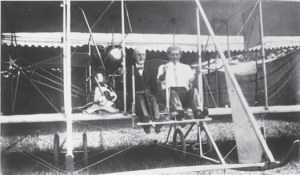 Witnessed First Successful Airplane Flight
Witnessed First Successful Airplane Flight
On the 20th day of September, 1904, it was my privilege to see the first successful trip ever made by an airplane without a balloon to sustain it – that is, the first complete flight, turning the corners and coming back to the starting point. In making this trip, the machine was kept near the ground, except in making the turns. Later on they twice succeeded in making four complete circles, each circle passing the starting point. These were nearly a mile in circumference and the last flight, December 1, 1904, could have been prolonged indefinitely, had it not been that the rudder was in such a position that it cramped the hand of the operator so he was obliged to alight. The longest flight at that time took only five minutes and four seconds. Over 100 flights were made in all during the Summer of 1904.
I was surprised at the speed and astonished at the wonderful lifting power of the comparatively small apparatus. When I saw it pick up the 50 pounds of iron so readily, I asked if it would carry me in place of the iron. I received by way of assurance the answer that the machine would no doubt carry me easily. You see I would then have had the front seat. It used to be customary in olden times to accord the “front seat” to the ladies, but I think the greater part of my readers would say, “Oh, sit still, Mr. Root, do not think of getting up to give us your seat.”
At first there was considerable trouble about getting the machine up into the air. This was accomplished on a long single-rail track, perhaps 200 feet long. The engine would be started and gotten up to speed, while the machine was held by a sort of trap to be sprung when all was ready; then with a tremendous snapping of the four-cylinder engine, the huge machine would spring aloft. When it first turned that circle and came near the starting point, I was right in front of it and I said then and I believe still, it was one of the grandest sights.








